A wedding dress is never just a dress. It is a living story stitched with heritage, love, and identity. Across the globe, brides have worn outfits that honor their culture, carry family traditions, and reflect timeless elegance. From the bright reds of India to the pure whites of the West, traditional bridal wear speaks a universal language of celebration and unity.
What makes these bridal outfits so special? Each piece is more than fabric; it is a symbol. Colors hold deep meaning. Embroidery tells tales of ancestors. Accessories add charm and power. When a bride wears her traditional attire, she does not simply walk down the aisle—she carries history with every step.
Across different cultures, we see beauty take many forms. In Japan, the Shiromuku kimono shines with grace. In Africa, bold Kente cloth glows with vibrance. Whether in China, the Qipao dazzles with refinement. And in the West, the white gown continues to inspire purity and elegance. Every style shows how weddings are moments where fashion meets identity and where modern love embraces old-world charm.
In this article, you will discover the allure of traditional bridal wear. You will learn how different regions create bridal beauty with fabrics, colors, and designs. You will explore the meaning behind these timeless outfits and see how they remain relevant even in today’s modern weddings. Most importantly, you will understand why traditional attire is not just about looking beautiful, but about feeling connected to something far greater—your culture, your family, and your story.
So, let us begin this journey of timeless elegance and celebrate the global beauty of bridal traditions.
The Cultural Significance of Traditional Bridal Wear
A wedding dress is never just fabric. It is a powerful symbol of love, culture, and family values. Across the world, traditional bridal wear reflects not only style but also the deep heritage of each community. Every stitch, color, and detail carries meaning that tells the story of where a bride comes from and what she believes in.
For example, in many Asian cultures, brides often wear red, as it symbolizes joy, luck, and prosperity. In the West, brides often choose white, which shows purity and new beginnings. In Africa, bold patterns and bright fabrics symbolize unity and community. These choices are not random. They are messages of hope, honor, and respect passed from one generation to the next.
Fabrics also hold cultural value. Silks, satins, and handwoven materials are chosen not only for beauty but also for their history of craftsmanship. The embroidery on a gown can represent blessings, strength, or even protection for the couple. Flowers, birds, dragons, and geometric designs are more than decorations—they are symbols of life, happiness, and good fortune.
This is why traditional bridal wear remains timeless. It connects brides to their roots while celebrating the future. By wearing these meaningful dresses, brides honor their families and preserve cultural traditions.
In every culture, traditional bridal wear is more than fashion—it is a story of heritage, values, and timeless elegance. And that story continues to shine brightly on every wedding day.
Timeless Styles of Traditional Bridal Wear Around the World
Brides across the world wear outfits that tell stories of love, culture, and heritage. From sparkling sarees in India to elegant white gowns in the West, traditional bridal wear shows how every culture celebrates marriage in a special way.
Each design is more than just clothing—it reflects identity, family roots, and timeless beauty. The colors, fabrics, and accessories all carry deep meaning, turning a wedding dress into a symbol of tradition.
What makes this fashion truly magical is how it connects the past with the present, blending old customs with modern style. Now, let’s explore some of the most iconic bridal styles from different regions and see how brides shine in their unique ways.
The Grace of Indian Bridal Sarees and Lehengas
Indian weddings are famous for their color, beauty, and elegance. At the heart of this celebration lies the bride’s outfit—sarees and lehengas—both shining symbols of tradition and style. They are not just clothes; they are treasures filled with meaning and artistry.
The colors of Indian bridal wear tell powerful stories. Red stands for love and prosperity, gold for wealth and purity, while other vibrant shades like green and pink symbolize harmony and joy. These colors make every bride glow with happiness and pride.
The saree and the lehenga are different yet equally graceful. A saree is a long piece of fabric draped elegantly around the body, while a lehenga is a skirt paired with a blouse and dupatta. Brides choose between them based on regional traditions, family customs, and personal style.
India’s regions add even more variety. Banarasi sarees with heavy zari work, Kanjeevaram silk sarees from South India, and Rajasthani lehengas with mirror work all showcase unique craftsmanship. Each piece is a work of art.
To complete the look, brides wear mangtikkas, bangles, and dupattas. These accessories add beauty, blessings, and cultural charm. Together, they make Indian bridal wear timeless and unforgettable.
The Elegance of the Japanese Shiromuku Kimono
In Japan, the bridal kimono called Shiromuku is one of the most elegant and meaningful wedding outfits. This attire is more than fabric—it is a symbol of tradition, purity, and respect. Every detail carries deep cultural value that makes it timeless.
The Shiromuku is always white, a color that stands for purity, new beginnings, and sincerity. By wearing white, the bride shows her readiness to embrace her new family with an open heart. The kimono is usually made of rich silk, decorated with hand-painted or embroidered motifs such as cranes, flowers, or waves, each symbolizing happiness, peace, and long life.
Accessories add even more meaning. The tsunokakushi, a special head covering, is worn to hide “horns of jealousy” and to symbolize humility. Brides may also carry a sensu, a folding fan, which represents prosperity and good fortune. These small details complete the graceful look.
The groom wears a montsuki hakama, a traditional black kimono with family crests, matching the bride’s elegant attire. Together, they reflect unity and respect for heritage.
In Shinto wedding ceremonies, the Shiromuku holds spiritual importance. It connects the couple to tradition, purity, and the blessings of their ancestors. This is why the Shiromuku remains a timeless symbol of Japanese bridal beauty.
The Vibrance of African Kente and Ankara Gowns
African bridal fashion is full of color, culture, and pride. Among the most iconic styles are Kente and Ankara gowns, each carrying rich history and deep meaning. These outfits are not just beautiful—they are powerful symbols of heritage and unity.
The famous Kente cloth comes from Ghana. Once worn only by royalty, it represents strength, honor, and wisdom. Each pattern tells a story, and every color has meaning. For example, gold stands for wealth, green for growth, and blue for harmony. When brides wear Kente on their wedding day, they celebrate both love and legacy.
Alongside Kente, Ankara fabrics have become a modern trend across Africa. Known for their bold prints and vibrant designs, Ankara gowns allow brides to mix tradition with contemporary style. Many families even wear matching outfits, showing cultural unity and togetherness during the celebration.
Accessories complete the look. Brides often wear a gele, the traditional headwrap, which adds elegance and authority. Paired with colorful beaded jewelry, it creates a regal and unforgettable bridal style.
This combination of bright fabrics, symbolic colors, and cultural pride makes African bridal wear truly unique. It proves that vibrance and tradition can shine together in timeless elegance.
The Refinement of Chinese Qipao and Cheongsam
Chinese bridal wear reflects both beauty and tradition. The most loved outfits are the Qipao and Cheongsam, known for their refined style and cultural depth. These dresses shine not only for their design but also for their meaning.
In Chinese weddings, red and gold are the main colors. Red stands for luck and happiness, while gold symbolizes wealth and success. Together, they bless the couple with joy and prosperity. The Qipao, with its high collar and body-hugging silhouette, is decorated with fine embroidery. Brides often choose patterns like dragons and phoenixes, which symbolize power and harmony, or peonies, which stand for love and good fortune.
Over time, the Cheongsam became a modern version of the Qipao. While still elegant, it offers slimmer cuts and more contemporary designs. This fusion of old and new makes it a favorite choice for today’s brides.
Accessories also carry meaning. Brides wear gold jewelry as a sign of good luck, while embroidered shoes complete the graceful look. During the traditional tea ceremony, the bride often wears a Qipao or Cheongsam to honor family and ancestors.
With its elegance, symbolism, and cultural pride, Chinese bridal attire is truly timeless.
The Charm of Western White Gowns and Veils
Western bridal fashion has a story full of elegance and tradition. The white wedding gown became popular after Queen Victoria’s wedding in 1840, when she wore a stunning lace dress that inspired brides everywhere. Since then, white has become a universal symbol of purity, grace, and new beginnings.
The charm of these gowns lies in their variety. From the grand ball gown to the sleek A-line and the glamorous mermaid silhouette, each style lets a bride express her personality. Over the years, fabrics have also evolved. Brides once loved heavy satin and lace, but now many also choose minimalist designs for a modern touch. Yet, no matter the fabric, each gown carries a sense of timeless beauty.
Accessories add even more magic. A veil represents modesty and tradition, while sparkling tiaras bring a royal touch. Brides also hold bouquets, symbolizing hope and joy as they walk down the aisle. Together, these details create a picture of romance that has lasted for centuries.
Western white gowns and veils remain beloved because they blend history, beauty, and individuality into one unforgettable look.
Fabrics and Craftsmanship That Define Elegance
Behind every stunning piece of traditional bridal wear lies a story woven with skill, patience, and artistry. What makes these dresses timeless is not only their beauty but also the fabrics and craftsmanship that bring them to life. Every thread tells a tale of culture, love, and tradition.
Brides across the world choose fabrics that shine with meaning and elegance. Luxurious silks are prized in Indian and Chinese weddings for their rich texture and graceful flow. Satins and velvets add depth and royalty to bridal gowns, making the bride feel like a queen. In the West, lace has become a classic, known for its delicate charm and soft romance. These fabrics are more than materials; they are chosen for the emotions and traditions they carry.
But the true magic lies in the craftsmanship. Handwoven techniques, detailed beadwork, and embroidery artistry make each outfit unique. From zari work in India to hand-painted patterns in Japan, every detail reflects the pride of skilled artisans. These techniques are passed down through generations, ensuring that cultural values live on in every stitch.
Local craftsmanship also keeps traditions alive. Small communities of weavers, dyers, and embroiderers pour their hearts into creating bridal outfits that cannot be mass-produced. Their work transforms fabric into living heritage.
This blend of fine fabrics and skilled artistry is what gives traditional bridal wear its timeless elegance. It is not just clothing—it is heritage in motion, crafted with love and preserved for the future.
Symbolic Colors in Traditional Bridal Wear
Colors are more than shades on fabric. In traditional bridal wear, they carry deep meaning, emotions, and blessings for the couple. Every culture uses colors not only for beauty but also for the values they represent. That is why a bride’s outfit is chosen with care, love, and respect for tradition.
In Asia, red is the most powerful bridal color. It stands for love, joy, and prosperity. Indian brides often wear red sarees or lehengas, while Chinese brides choose red Qipaos to attract good fortune and happiness. Red is not just bright—it is a promise of a lucky and strong future.
In the West, white gowns became popular after Queen Victoria’s wedding. White reflects purity, grace, and fresh beginnings. Even today, white remains the symbol of classic elegance in Western weddings.
In many Middle Eastern and African cultures, gold is the color of wealth, sacredness, and blessing. Golden embroidery, jewelry, and fabrics show honor and shine with royal beauty. It is a way to celebrate abundance and success for the new couple.
Other shades also carry meaning. Green often stands for fertility and harmony, while blue represents peace and loyalty. Different regions add their special hues, making bridal wear unique to every culture.
This is why colors in traditional bridal wear are more than decoration. They are living symbols of love, hope, and timeless elegance. Every shade tells a story, making the wedding day truly unforgettable.
Bridal Accessories and Adornments That Complete the Look
No bridal outfit is complete without the perfect accessories. In traditional bridal wear, adornments are not just decorations; they hold meaning, history, and elegance. Every jewel, veil, or scarf adds a layer of culture and beauty to the bride’s look.
Intricate jewelry and headpieces are often the centerpiece of bridal attire. In India, brides wear heavy gold necklaces, earrings, and a maang tikka on the forehead, symbolizing prosperity and strength. In Africa, colorful beads and crowns celebrate unity and pride. Meanwhile, in the West, tiaras and pearl jewelry bring a touch of grace and royalty.
Veils, dupattas, and scarves also play an important role. In Christian weddings, the veil stands for purity and mystery, creating a magical moment when lifted. In South Asian weddings, the dupatta covers the bride’s head, symbolizing respect and blessings. Scarves in Middle Eastern cultures often carry embroidery and gold threads, adding sacredness to the outfit.
Even the smallest details matter. Footwear, belts, and other cultural essentials complete the ensemble. Japanese brides wear traditional sandals with their kimonos. In some African traditions, waist beads or belts represent fertility and beauty. Each accessory has a purpose, making the outfit both meaningful and unique.
Together, these adornments show that traditional bridal wear is not just about fabric. It is a complete expression of love, faith, and cultural pride. Every piece tells a story, turning the bride into a living symbol of elegance and tradition.
Modern Interpretations of Traditional Bridal Wear
While traditions stay strong, today’s brides also love a touch of modern flair. That is why traditional bridal wear is now blending the best of both worlds—classic heritage with contemporary style. This fusion creates looks that are timeless yet fresh, honoring the past while embracing the present.
Many brides choose fusion designs that combine old fabrics with new cuts. For example, an Indian bride may wear a lehenga with a modern crop-style blouse. A Western bride may add lace inspired by vintage gowns to a sleek silhouette. These blends allow brides to keep cultural pride alive while still expressing personal taste.
Designers around the world are reviving traditional bridal elements and reshaping them for today’s weddings. They bring back hand embroidery, silk fabrics, and cultural motifs, but style them in a way that feels chic and elegant. This creativity keeps traditional artistry alive while appealing to modern fashion lovers.
Celebrities and influencers also play a big role. Many stars have chosen to wear heritage-inspired bridal outfits on their big day, inspiring millions of brides-to-be. From Bollywood weddings in rich reds and golds to Hollywood stars wearing gowns with cultural touches, these moments remind us that tradition is never out of style.
In the end, modern interpretations prove that traditional bridal wear is flexible, powerful, and everlasting. It can adapt, transform, and shine in every era—making each bride feel unique, confident, and deeply connected to her roots.
Why Traditional Bridal Wear Remains a Timeless Choice
In a world full of changing trends, one thing never fades—traditional bridal wear. It continues to be the favorite choice of brides everywhere because it is more than fashion. It is a connection to love, family, and history.
First, these outfits carry an emotional connection and family legacy. Many brides wear sarees, gowns, or jewelry passed down from mothers and grandmothers. Each piece holds memories, blessings, and stories. Wearing such attire makes the wedding day even more meaningful.
Second, traditional bridal wear supports sustainability and slow fashion. Instead of fast trends, these outfits are made with care, using quality fabrics and handwork that last for years. Brides often preserve their dresses as heirlooms, passing them down for generations. This makes them both eco-friendly and everlasting.
Finally, these outfits help brides stand out with authenticity and uniqueness. While modern gowns may look alike, cultural attire always feels special. Bold colors, unique embroidery, and symbolic accessories set each bride apart. It shows personality and roots in a way that no mass-produced dress can match.
This is why traditional bridal wear remains timeless. It is not only about looking beautiful—it is about feeling connected, honoring values, and creating memories that last forever. By choosing tradition, a bride shines with elegance and pride, carrying her culture gracefully into the future.
Conclusion: Embracing Tradition in Today’s Weddings
As we reach the end of this journey, one truth shines bright—traditional bridal wear is more than fashion; it is a timeless story of love and heritage. From India’s shimmering sarees to Japan’s graceful kimonos, from Africa’s vibrant Kente to the West’s elegant white gowns, every culture adds its beauty and meaning to the wedding day. These outfits are not only stunning to see but also powerful symbols of history, family, and unity.
When a bride chooses to wear her cultural attire, she is making a statement. She is saying, “I honor where I come from, and I carry my roots into my future.” This makes traditional bridal wear a meaningful choice—one that blends elegance with identity. It is not just about looking perfect in photos; it is about feeling connected to something greater than yourself.
Today, many brides are also blending modern trends with classic styles, showing that tradition and innovation can walk hand in hand. Whether through fabrics, colors, or accessories, the beauty of bridal attire continues to inspire across generations.
So, if you are planning your wedding, think about what story you want to tell. Explore your cultural roots. Consult with skilled designers who can help you honor tradition while adding your unique touch. Most importantly, wear what makes you feel beautiful, proud, and true to your journey.
We would love to hear from you! Share your favorite traditional bridal look in the comments below and celebrate the elegance of bridal traditions with us.
Because in the end, the beauty of traditional bridal wear will always remain timeless elegance.

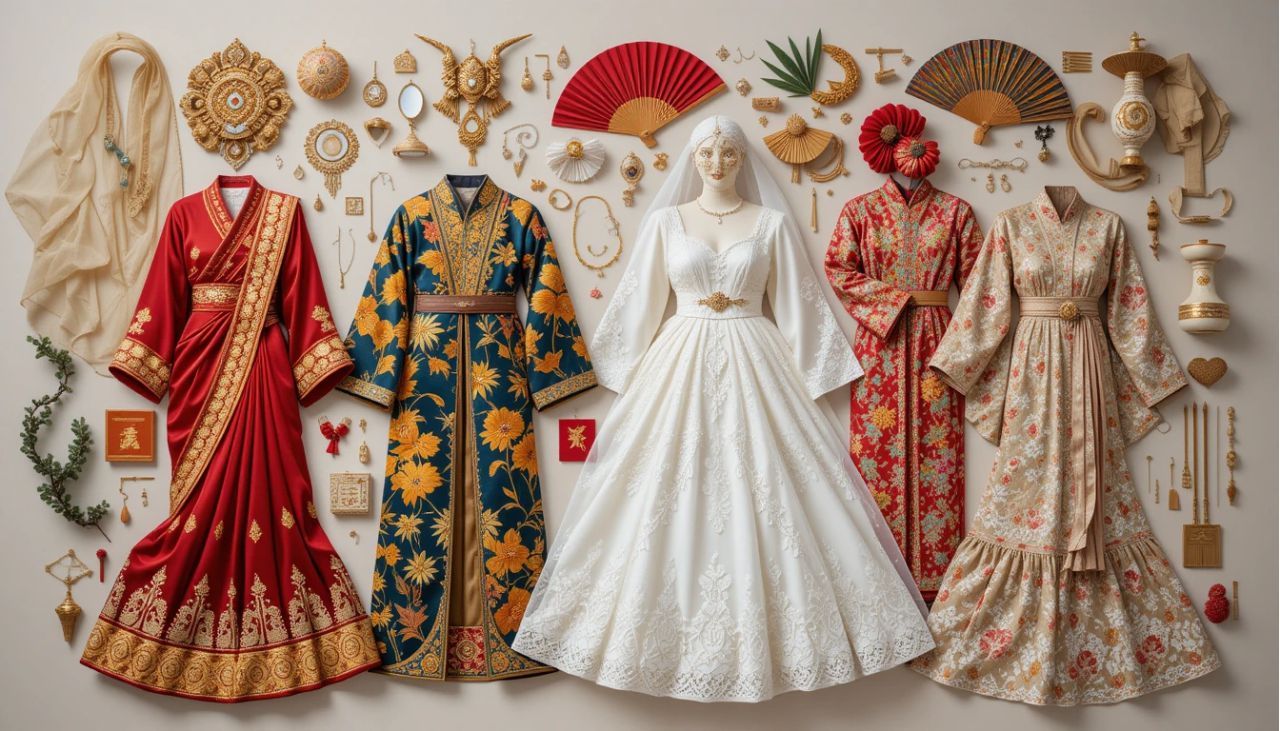
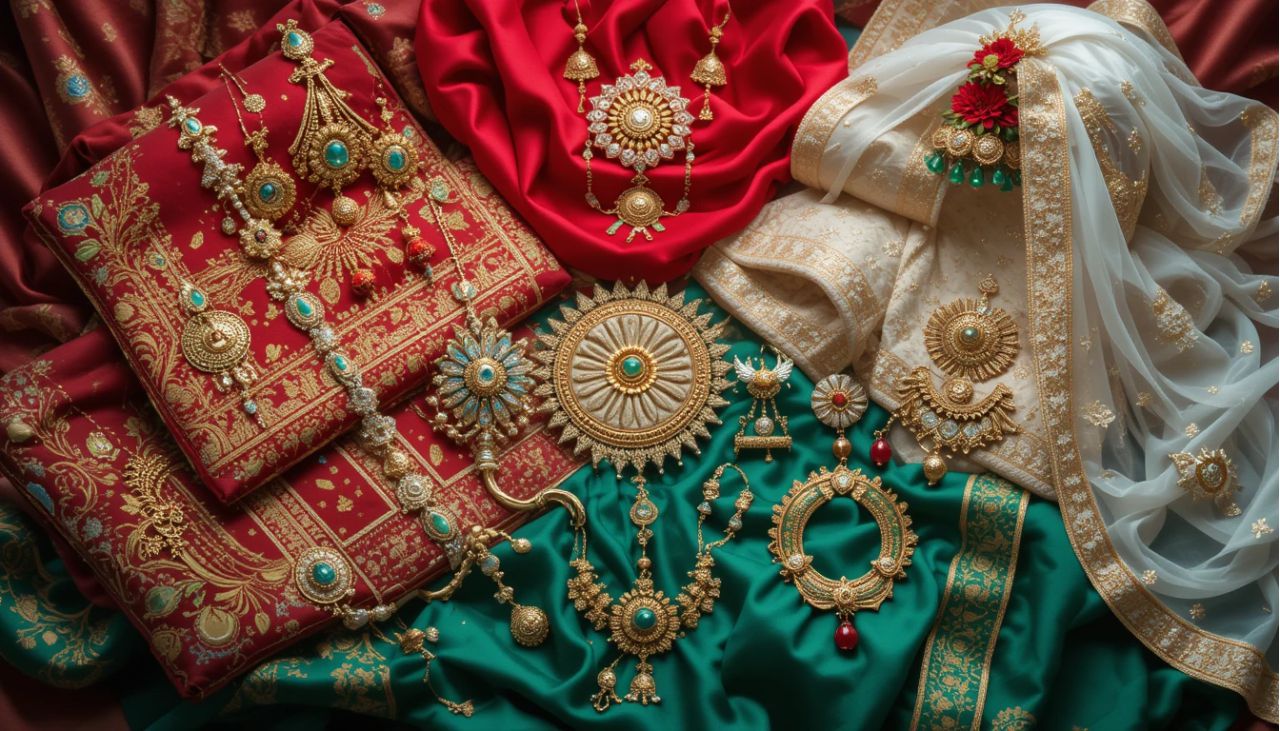
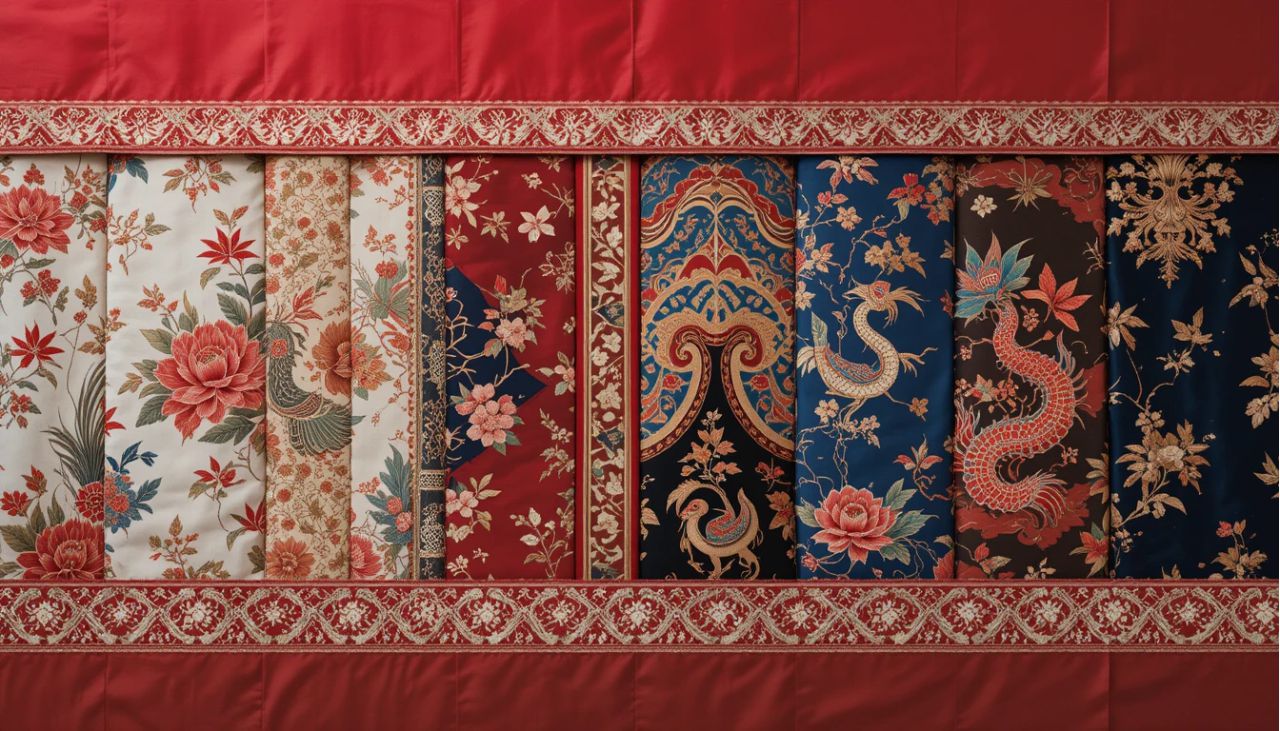
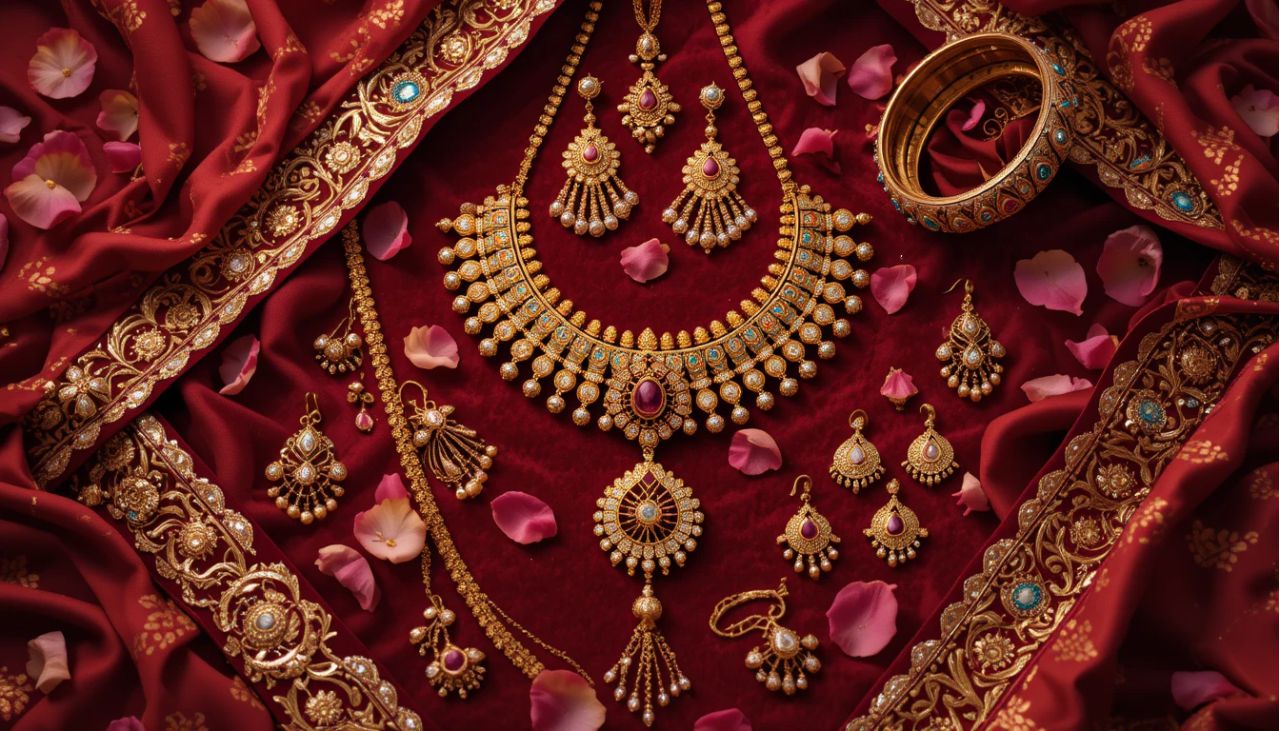
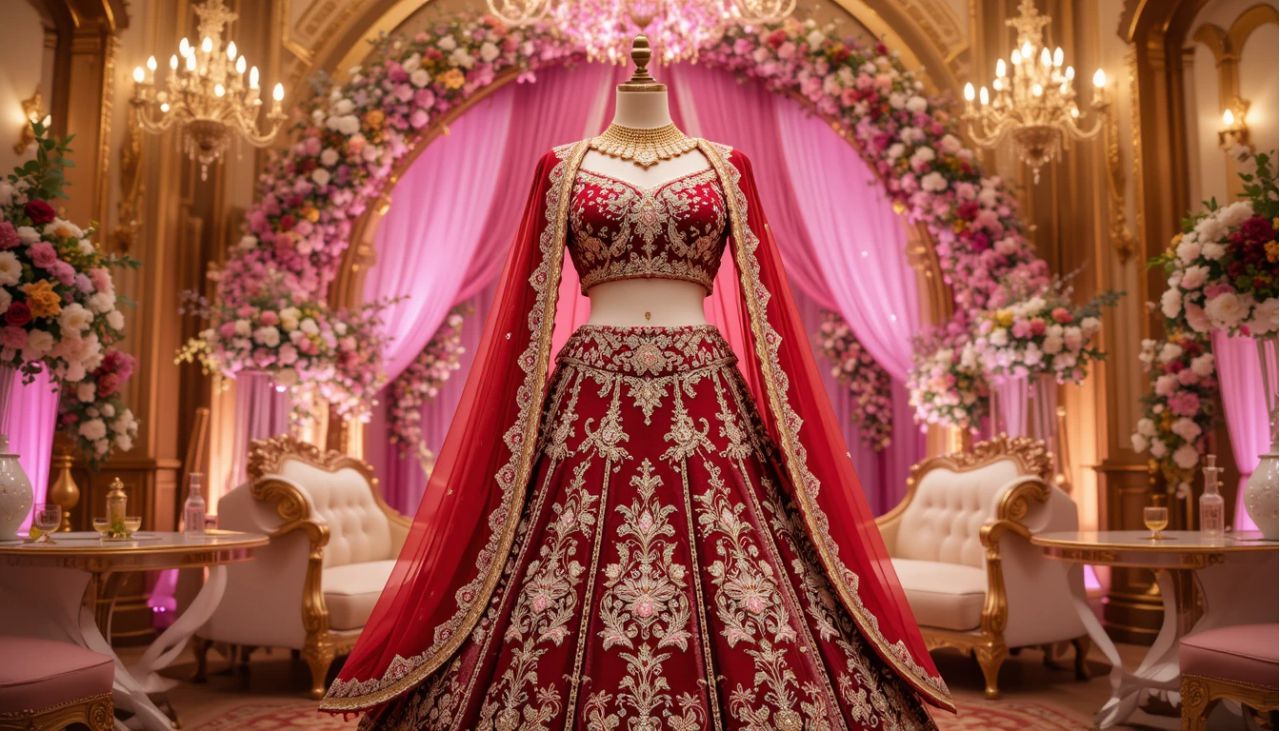
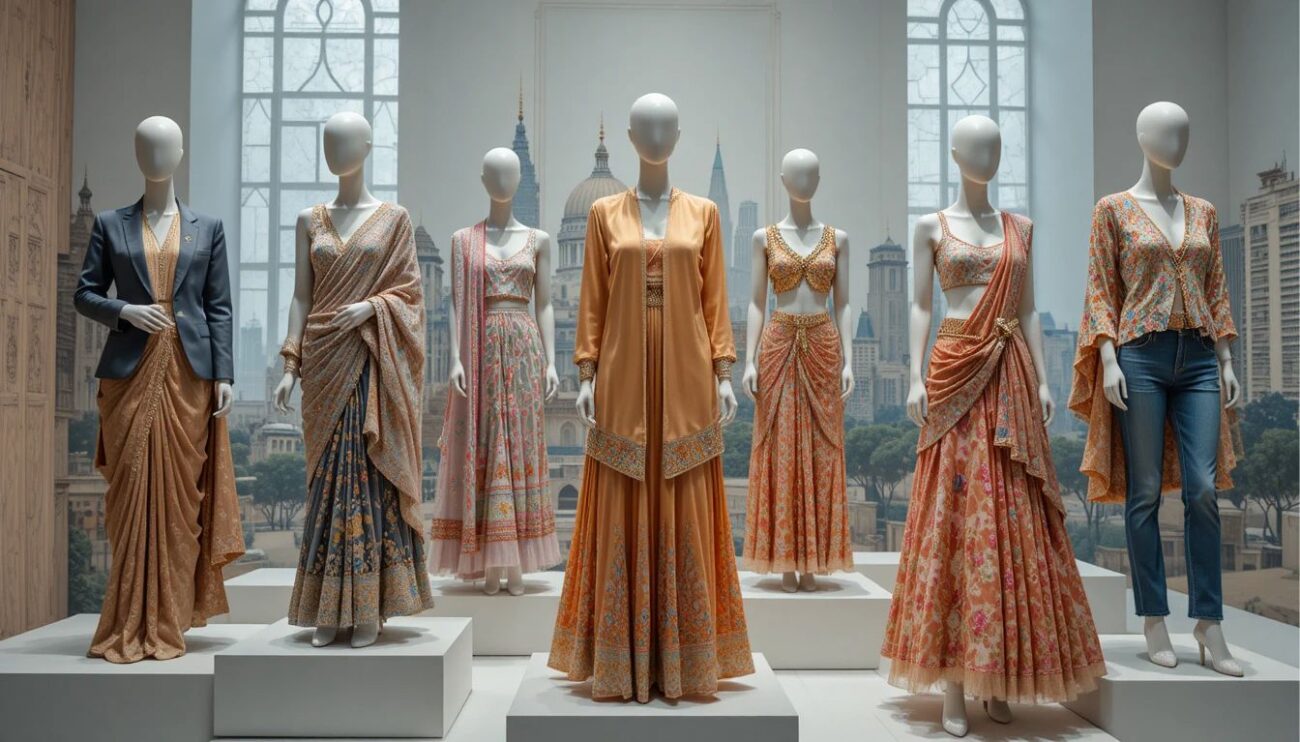
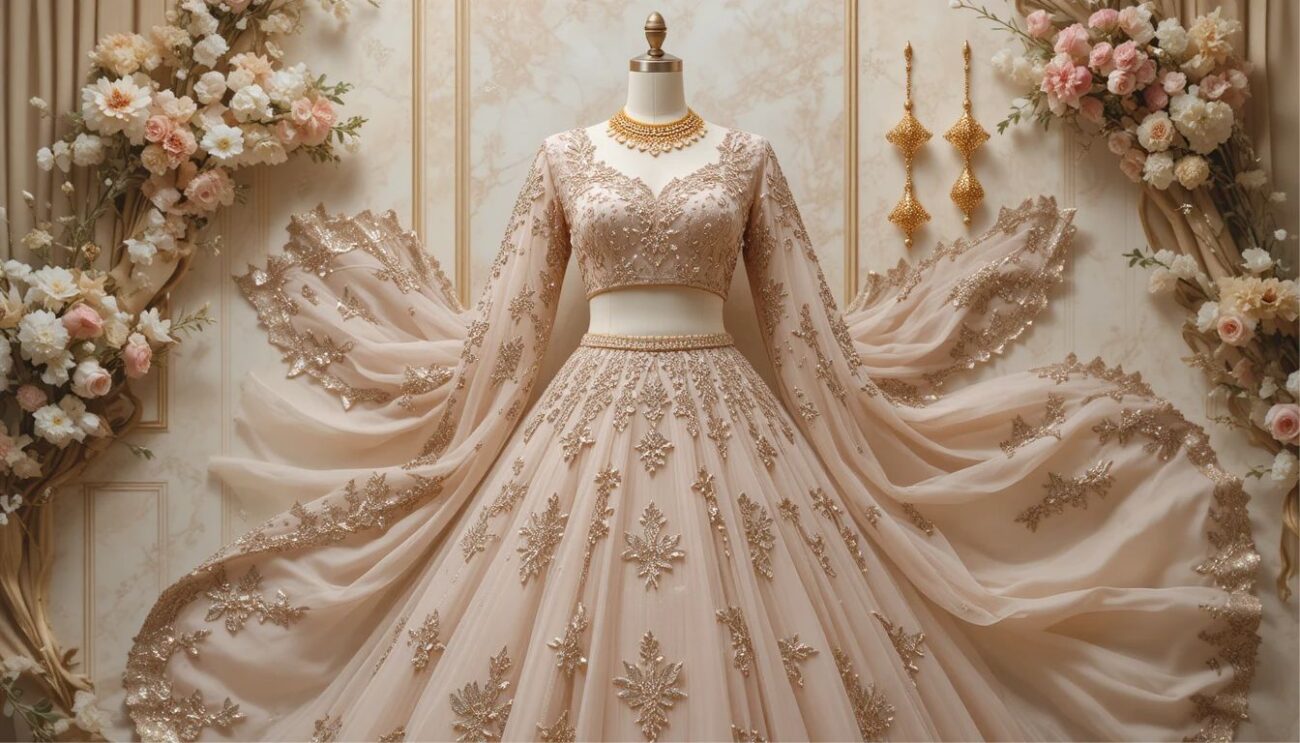
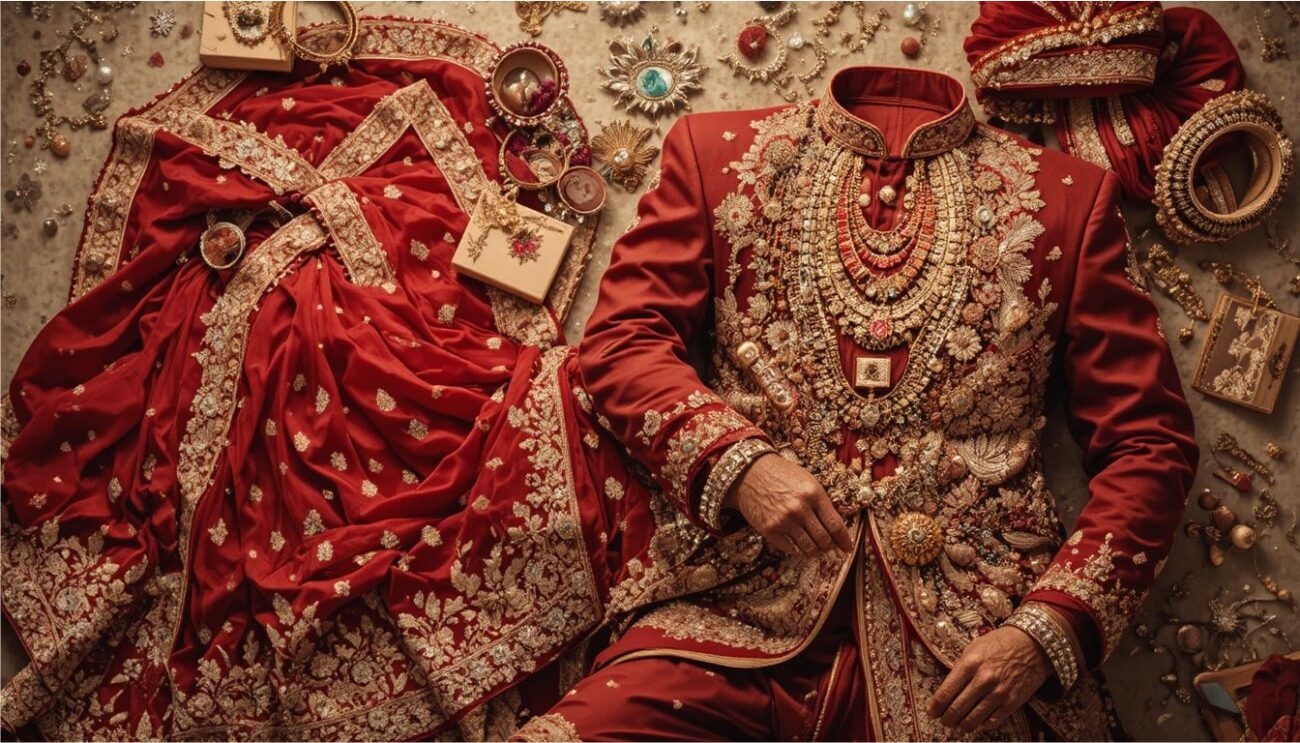
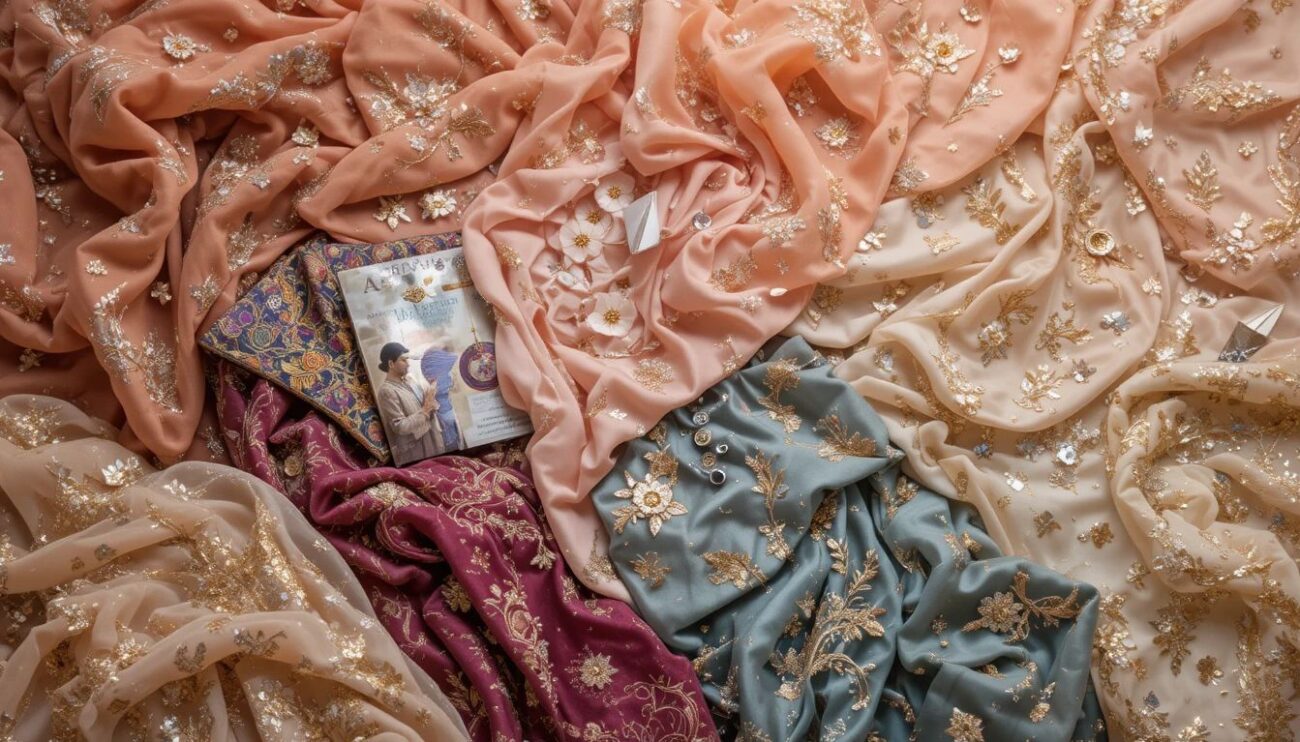
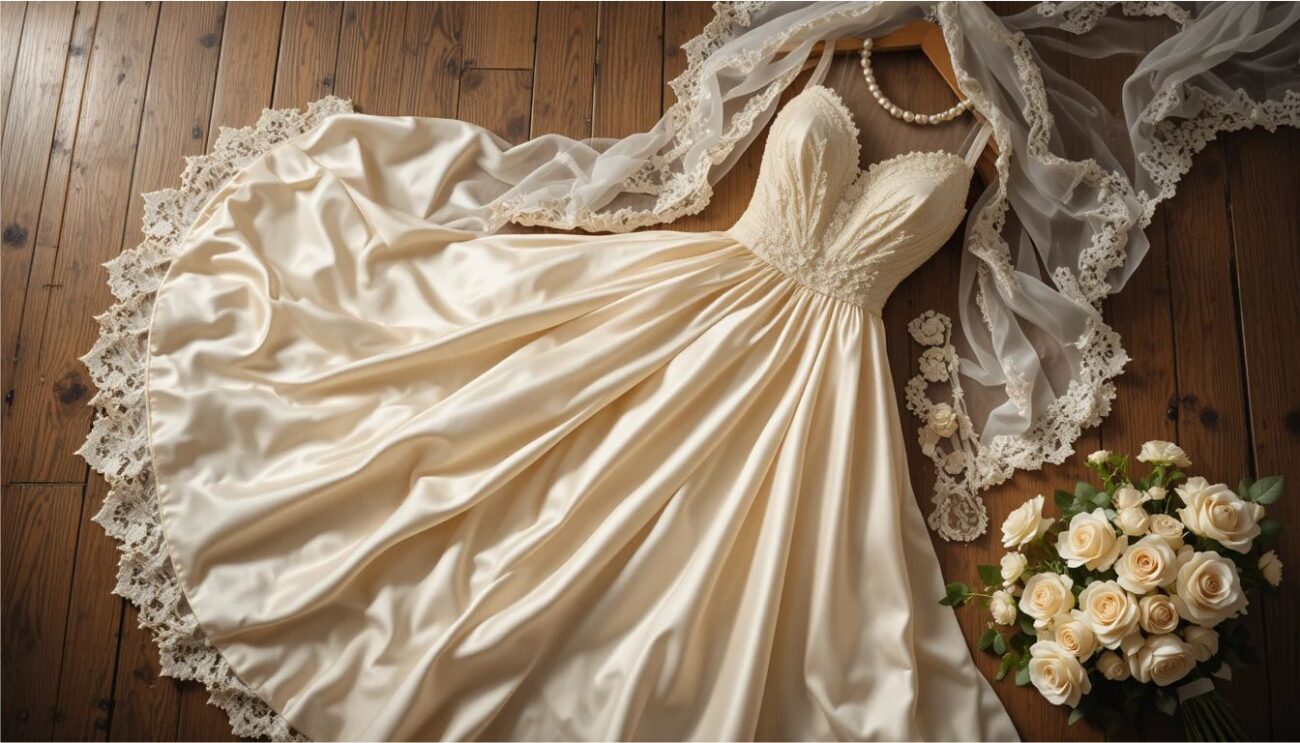
Leave a comment
You must be logged in to post a comment.